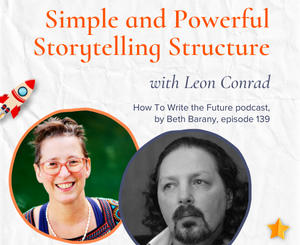Editing on The Go by Tiffany Turpin Johnson
 Welcome back to Tiffany Turpin Johnson, a kidlit writer and editor whose monthly column, Scribe Supplies: Writerly Tools for Success, brings you the best in all types of tools for professional writers. Today she shares her secrets to editing on the go.
Welcome back to Tiffany Turpin Johnson, a kidlit writer and editor whose monthly column, Scribe Supplies: Writerly Tools for Success, brings you the best in all types of tools for professional writers. Today she shares her secrets to editing on the go.
***
A few months back, I posted a column that outlined an efficient way to write your entire novel on your iPad or iPhone. But writing a novel is more than just stringing words together on your device. Eventually you’ll have to edit those words. And then edit them again. And again.
There are a few ways of doing this. You can go old-school and print out a paper copy of the manuscript, then go through with a red pen. I like the tactile experience of this method, but you end up having to sit at your computer to type all the changes in, which doubles the time involved and increases the risk of editing errors, which you’ll then have to do another read-through to check for.
Alternatively, you can turn your novel into an ebook and load it onto your ereader, then handwrite notes on paper while you read through. The problem with this method is that while you can digitally flag sections you’d like to come back to, the flagging process is cumbersome and doesn’t allow you to make changes to the actual document without going back to the original file on your computer. Which means that with either of these methods, you’re going to spend a vast amount of time married to your computer.
Life is just too busy for these methods today, and editing is tough enough without having to dedicate rare bits of quality time to your computer. What if the only few minutes of free time you get are while waiting in the car for your kid to come out of piano practice, miles away from your computer? Or in the waiting room of your dentist’s office with only your wallet and smartphone?
You’re in luck, because I have another method for you. Many writers prefer the simplicity of Microsoft Word’s Review tab for their editing, whether it’s for their own work or for a client or critique partner. In Word, you can use the Track Changes function to highlight every change that you make to the document, so that you can reverse a change at any time (or accept/reject the changes of others). You can also insert comments, marking sections to come back to, things to add in, unanswered questions, and the like. The problem is that you generally need your computer to work in Word, and your computer’s usually at home. Microsoft does offer a to-go app for their Office suite, but unless you have a Windows Phone, it’s too pricey for most of us struggling artists.
I couldn’t afford the Microsoft app, so I found another way. There’s an app that allows you to work in Microsoft Word using Track Changes and comment functions, all on your mobile device. Best of all, it’s free and available for both Apple and Android platforms. (I know, I sound like a commercial, right? But I swear I’m not getting paid for this!)
Here’s what you’ll need:
- A computer with Microsoft Word software installed
- Your manuscript as a Word file, stored in one of the cloud accounts listed below
- A cloud storage account with Dropbox, Google Drive, SkyDrive, and/or Box
- An approved Apple or Android device with the CloudOn app installed
- Optional: wireless keyboard, device stand
All you have to do is download CloudOn and sync it to your cloud storage, and then you can open your Word (or Excel, PowerPoint, or editable PDF) file through the app to edit, keeping Track Changes and comments intact. You can even add annotations and open email attachments directly in CloudOn (perfect for working with critique partners). Any changes save automatically. You can’t yet print directly from CloudOn or work without internet access, but those changes are in the pipeline for future app updates.
A small caveat for Scrivener devotees: CloudOn won’t link to your much-beloved software. I’m a Scrivener convert myself, but I still use this method. What I do is write the first draft in Scrivener, then compile the file in Microsoft Word, where I do my editing on the go through CloudOn. Once the editing’s done and I feel I have a pretty complete manuscript, I import the Word doc into a brand-new Scrivener file, which I then use to turn the work into an ebook, or whatever else I want to do with it.
Have you tried editing on your device? What editing process do you use?
***
 Tiffany Turpin Johnson is a novelist represented by Annie Bomke Literary Agency, and operates TJ Writeography, a freelance writing and photography service. She regularly contributes to various blogs, and serves as Senior Editor for Entranced Publishing and Assistant Editor for Compose Literary Journal. Find her at www.fictiffous.com and on Twitter at @Fictiffous.
Tiffany Turpin Johnson is a novelist represented by Annie Bomke Literary Agency, and operates TJ Writeography, a freelance writing and photography service. She regularly contributes to various blogs, and serves as Senior Editor for Entranced Publishing and Assistant Editor for Compose Literary Journal. Find her at www.fictiffous.com and on Twitter at @Fictiffous.






